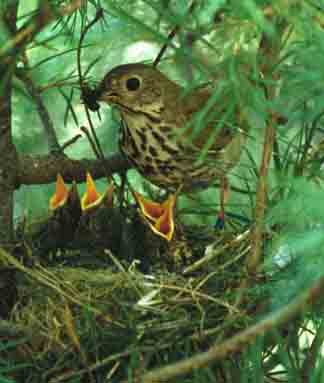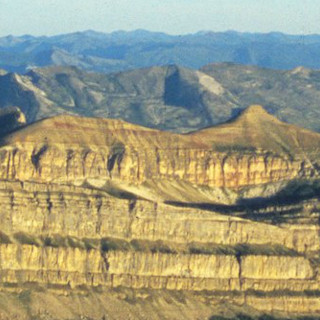Large herbivore (elk/deer) exclusion experiment on a riparian ecosystem and bird community
Ongoing Research, Tom Martin
Large herbivores have been found to impact a variety of systems, and aspen in the western North America seems particularly susceptible. However, other important deciduous plants, such as canyon maple, also appear to get hit hard by large herbivores. Maple, locust, aspen and other deciduous plants have declined dramatically in an important high elevation (7800' elev) riparian system found in snowmelt drainages in northern Arizona (see graph). Aspen has had ZERO recruitment for at least 50 years in these drainages. The decline in these plants and lack of recruitment may be influenced in part by climate change, which is being studied in a climate change project but may also reflect a critical interaction with heavy browsing by elk and deer.

To separate browsing and climate effects on this ecosystem, a new large-scale experiment will be initiated in the summer of 2004. Entire drainages of 9 ha (600 m long by 150 m wide) will be fenced to exclude elk and deer. Study plots are snowmelt drainages that drain from ridges into canyons. Three replicates will be established, each on three different major ridges and separated by canyons, and each exclosure will be paired with an adjacent unfenced control plot.
This work will be conducted in collaboration with Dr. John Maron, who will conduct intensive examination of the effects of browsing (or exclusion of browsing) on plant recruitment and consequences for the small mammal community. This will be integrated with bird and system level studies.
Long-term monitoring (since 1987) of birds, nest predation, and plant densities will be continued. We will examine whether exclusion of browsing will allow recovery of sensitive plants even in dry winters and whether recovery of plants is associated with recovery of birds: a number of bird species have shown strong long-term population declines associated with loss of plants that serve as their preferred breeding habitat. MacGillivray's Warblers, in particular, declined from once being common to now being locally extinct. We will seek to see if reduction in browsing and recovery of plants causes recovery of MacGillivray's Warblers. Stay tuned for results of this important experiment.
We will also examine trophic interactions. Do plant densities as a function of browsing pressure influence small mammal populations with consequences for levels of nest predation on birds? Do plant densities have direct effects on nest predation?
Large herbivore (elk/deer) exclusion experiment on a riparian ecosystem and bird community.
